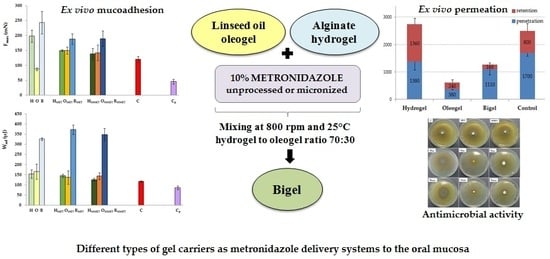Different Types of Gel Carriers as Metronidazole Delivery Systems to the Oral Mucosa
Abstract
Share and Cite
Wróblewska, M.; Szymańska, E.; Szekalska, M.; Winnicka, K. Different Types of Gel Carriers as Metronidazole Delivery Systems to the Oral Mucosa. Polymers 2020, 12, 680. https://doi.org/10.3390/polym12030680
Wróblewska M, Szymańska E, Szekalska M, Winnicka K. Different Types of Gel Carriers as Metronidazole Delivery Systems to the Oral Mucosa. Polymers. 2020; 12(3):680. https://doi.org/10.3390/polym12030680
Chicago/Turabian StyleWróblewska, Magdalena, Emilia Szymańska, Marta Szekalska, and Katarzyna Winnicka. 2020. "Different Types of Gel Carriers as Metronidazole Delivery Systems to the Oral Mucosa" Polymers 12, no. 3: 680. https://doi.org/10.3390/polym12030680
APA StyleWróblewska, M., Szymańska, E., Szekalska, M., & Winnicka, K. (2020). Different Types of Gel Carriers as Metronidazole Delivery Systems to the Oral Mucosa. Polymers, 12(3), 680. https://doi.org/10.3390/polym12030680








